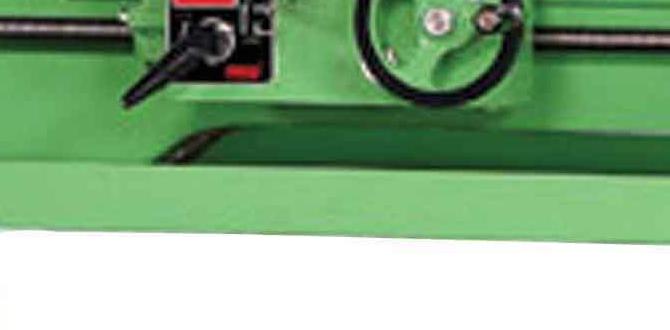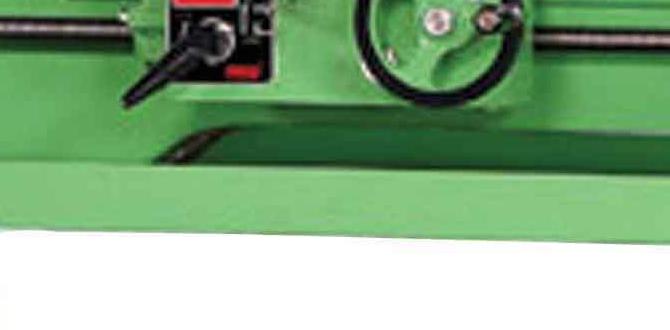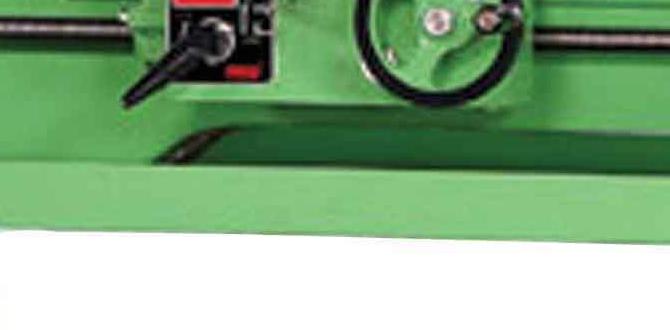Amazing Homemade Wood Lathe Duplicator Ideas
Unlock the potential of your workshop and transform your woodworking projects with the ingenious world of homemade wood lathe duplicators. For hobbyists and seasoned woodturners alike, creating identical or consistently shaped components can be a time-consuming and precision-intensive endeavor. This is where the magic of a lathe duplicator comes into play, allowing you to replicate designs with remarkable accuracy. Forget the expense of commercial units; with a bit of ingenuity and readily available materials, you can build your own powerful tool that streamlines production and elevates the professionalism of your work. Whether you’re crafting a set of matching table legs, identical spindles for a railing, or a series of decorative elements, these amazing homemade wood lathe duplicator ideas will inspire you to build, create, and perfect your turned pieces.
The fundamental principle behind a wood lathe duplicator is to guide a cutting tool along a master template, ensuring that a workpiece mounted on the lathe is shaped identically. This removes the guesswork and the need for constant measurement and adjustment, especially when producing multiple identical items. The beauty of DIY solutions lies in their adaptability. You can tailor the design to your specific lathe, the types of projects you undertake, and even the materials you have on hand. From simple follower arms to more complex tracing mechanisms, there’s a wealth of creativity waiting to be explored in building your own turning assistant.
Understanding the Core Mechanics of a Wood Lathe Duplicator
Before diving into specific designs, it’s helpful to grasp the essential components and how they work together. At its heart, a lathe duplicator consists of three main parts:
The Master Template: This is your original piece, the “master” you want to replicate. It can be a well-turned existing piece or a specifically crafted pattern.
The Follower/Tracer: This component physically follows the contours of your master template. It’s usually a stylus, roller, or bearing that moves in close contact with the template.
The Tool Guide/Carriage: This mechanism holds your cutting tool and is linked to the follower. As the follower moves along the template, the tool guide instructs the cutting tool to move in a corresponding manner, removing material from the workpiece to match the master.
The key is the synchronized movement between the follower and the cutting tool. This synchronization can be achieved through various mechanical linkages, pivot points, and sliding mechanisms. The accuracy of your duplicator will largely depend on the precision of its construction and the quality of its components.
Exploring Amazing Homemade Wood Lathe Duplicator Ideas
The internet is a treasure trove of inspiration for wood lathe duplicator homemade ideas, with woodworkers sharing their designs and build processes. Here are a few popular and effective approaches:
1. The Simple Follower Arm Duplicator:
This is often the most accessible design for beginners. It typically involves an arm that pivots, with the follower at one end and a mount for your cutting tool at the other. The arm is usually positioned on rails or a sliding mechanism that allows it to traverse the length of your lathe bed.
How it works: The master template is mounted securely on the lathe. The follower arm is positioned so the follower rests against the template. The cutting tool is then placed against the workpiece. As you turn both the lathe and the headstock (if your template is fixed) or when the lathe is running and you advance the tool, the follower traces the template’s shape, and the tool is guided to mirror that shape on the workpiece.
Materials: This design can be built from scrap wood, metal angle, drawer slides, threaded rods, and basic fasteners. The follower can be as simple as a smooth-turned wooden dowel, a ball bearing, or a specialized carbide stylus.
2. The Sliding Carriage Duplicator:
More advanced designs often incorporate a dedicated carriage that slides along the lathe bed. This carriage houses both the follower mechanism and the tool holder, allowing for smoother and more controlled movement.
How it works: The template and the workpiece are mounted on the lathe. A carriage assembly moves along the lathe bed. This carriage has two key components: a follower unit that traces the template and a tool holder that is mechanically linked to the follower. The linkage ensures that as the follower moves in or out relative to the template’s surface, the tool holder moves in or out relative to the workpiece.
Materials: This often involves more precise cuts and stronger materials like steel or aluminum for the sliding components. Linear bearings or well-lubricated metal-on-metal contact are crucial for smooth operation.
3. The Pivot-Based Duplicator:
Some designs utilize a pivot point to create the mirroring action. The follower arm pivots against the template, and this pivot action is transferred to the tool holder.
How it works: A main arm pivots on a fixed point. The follower is at one end, and the tool holder is at the other, with an adjustable linkage in between. The template is usually held stationary or moves in sync with the workpiece in a specific way.
Materials: This can be effective with well-designed pivot points and adjustable linkages to fine-tune the relationship between the follower and the tool.
Tips for Building Your Own Wood Lathe Duplicator
Regardless of the specific design you choose, a few general tips will help ensure your success:
Precision is Key: Even small inaccuracies in your build can lead to significant differences in your turned pieces. Measure twice, cut once.
Smooth Movement: Any binding or play in the follower mechanism or tool carriage will translate into imperfect copies. Use quality bearings, lubricate well, and ensure all moving parts are aligned correctly.
Rigid Construction: The duplicator needs to be sturdy enough to withstand the forces involved in woodturning. Avoid flimsy materials or wobbly joints.
Adjustability: Ideally, your duplicator should have some degree of adjustability. This could include the ability to adjust the distance between the follower and the tool, the angle of the tool, or the overall travel length.
Safety First: Always follow safe operating procedures when using your lathe and any attached tools. Ensure your duplicator is securely attached and won’t dislodge during operation.
Why Invest Time in a Homemade Duplicator?
The rewards of building your own wood lathe duplicator extend far beyond simply replicating shapes. You gain a deeper understanding of mechanical systems, a sense of accomplishment from a successful DIY project, and the satisfaction of creating a tool that perfectly fits your needs. This not only saves you money compared to purchasing commercial units but also allows for customization that mass-produced items might not offer. Imagine effortlessly creating matching finials for a custom furniture piece, producing a consistent set of decorative elements for a staircase renovation, or even making identical parts for a musical instrument. The possibilities are truly vast.
When searching for wood lathe duplicator homemade ideas, look for designs that are well-documented with clear diagrams and build instructions. Pay attention to the materials used and consider whether they are readily available to you. Don’t be afraid to adapt existing designs to suit your specific lathe model or woodworking requirements. The joy of woodworking often lies in the problem-solving and creative application of tools, and building your own lathe duplicator is a fantastic way to embrace that spirit. With a little dedication and the right plan, you can equip your workshop with a powerful and precise woodworking assistant.





